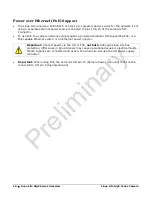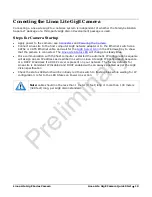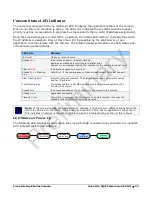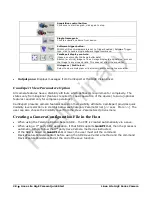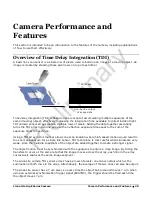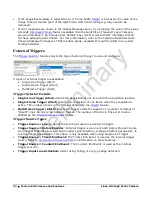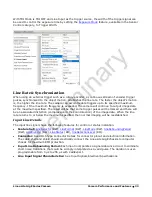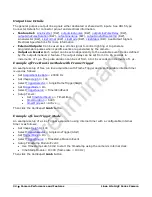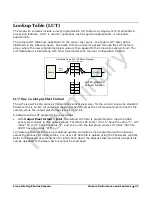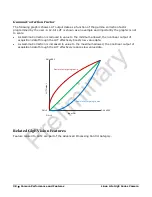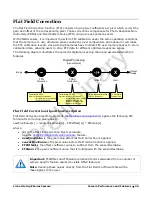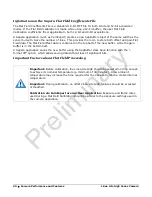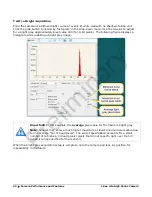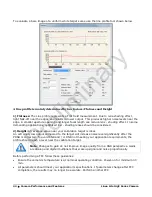
Linea Lite GigE Series Camera
Camera Performance and Features
•
29
Camera Performance and
Features
This section is intended to be an introduction to the features of the camera, including explanations
of how to use them effectively.
Overview of Time Delay Integration (TDI)
A basic line scan sensor is a single row of pixels, used to build up an image of a moving object. An
image is created by stacking these pixel rows on top of each other.
2D Image
Line-by-line output
of image data
Time delay integration (TDI) is based on the concept of accumulating multiple exposures of the
same (moving) object, effectively increasing the integration time available to collect incident light.
TDI camera sensor arrays contain multiple rows of pixels. Adding the data together essentially
turns the TDI array into a line array with an effective exposure time equal to the sum of the
exposure times for each line.
Using a TDI array in this manner allows line scan imaging where high-speed motion would result in
too short an exposure for a single line sensor. TDI technology is most useful when signals are very
weak, since the multiple snapshots of the object are added together to create a stronger signal.
The object motion must be synchronized with the exposures to ensure a crisp image. By timing the
transfers to occur at the same rate that the image moves across the array, each line in the array
successively captures the same image segment.
The Linea Lite camera TDI sensor arrays have 2 rows of pixels; one line is output which is the
summation of both rows in the array. Alternatively, the average of the two lines can also be output.
The Linea Lite sensor has a 7 um pixel, so every time the object being imaged moves 7
μ
m, when
using an external synchronization trigger signal (EXSYNC), the trigger should be fired each time
the object moves 7
μ
m.
Preliminary


